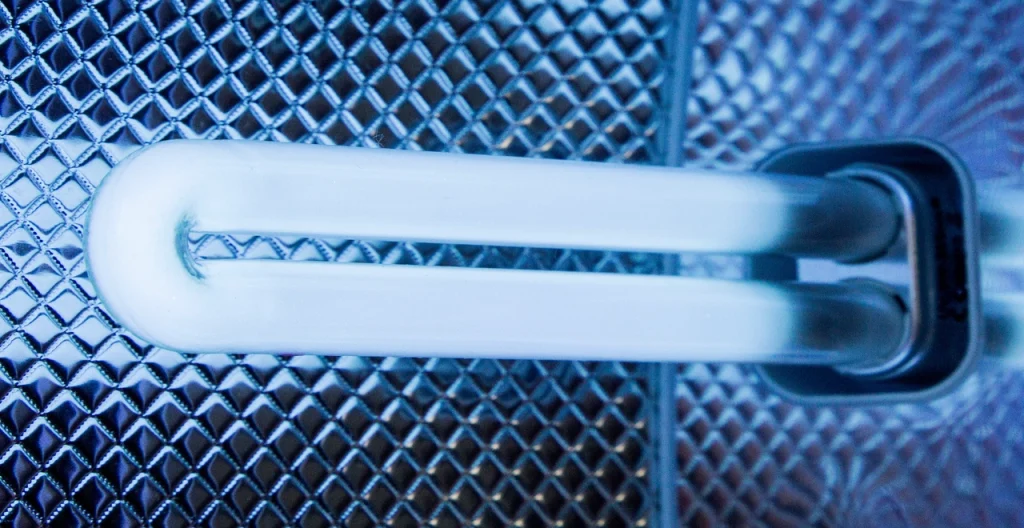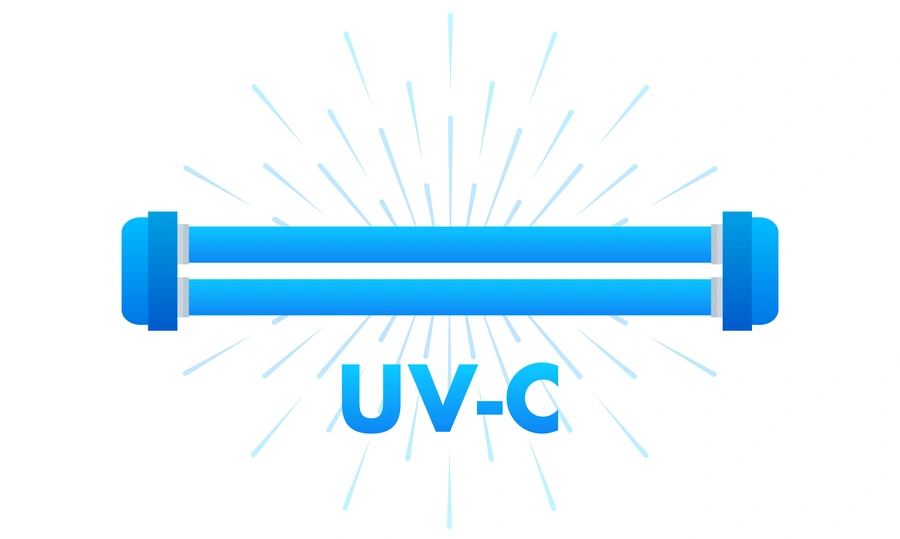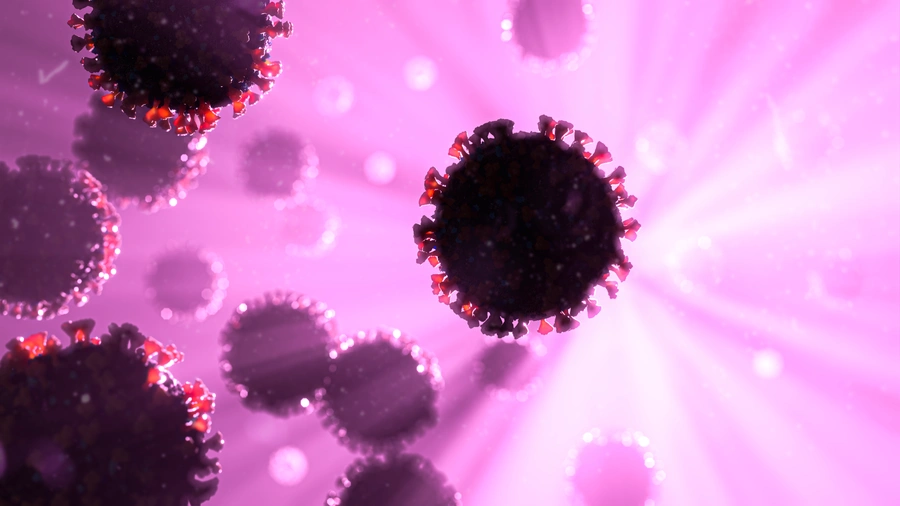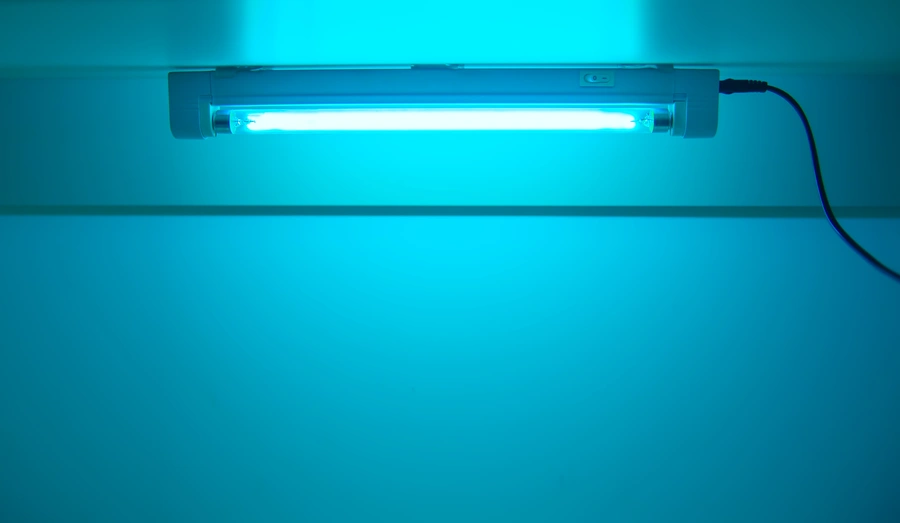
With heating and cooling used in more than three-fourths of commercial buildings, isn’t it time we consider the air we breathe when we’re not at home? For years, the use of UV light for HVAC systems has been seen as a reliable solution to purify our indoor air. However, like any technology, it comes with its share of drawbacks.
For one, the efficiency of UV light is highly dependent on exposure time, often leading to less-than-perfect results. Are there other options that might serve us better? Enter air sterilization technology – a potentially superior alternative.
Stick with us as we delve into this fascinating subject, comparing and contrasting these two methods of improving indoor air quality.

HVAC stands for Heating, Ventilation, and Air Conditioning. This system controls the indoor climate of buildings and vehicles and ensures that air quality is kept at optimal levels for the comfort and health of the occupants. HVAC systems work by:
The role of HVAC is crucial. Without effective HVAC systems, buildings could become breeding grounds for harmful microbes, jeopardizing the health of the occupants. The HVAC system is also responsible for removing unwanted humidity and contaminants from the indoor environment.

In the quest for superior air quality, integrating UV light for HVAC systems has gained traction. Ultraviolet light, particularly the UVC spectrum, possesses germicidal properties. It’s capable of inactivating various pathogens such as bacteria, viruses, and mold.
This happens when the UV light strikes the DNA of these microorganisms, inhibiting their ability to reproduce and function effectively.
Integrating UV light bulbs into HVAC systems provides an additional layer of defense against airborne pathogens. As air circulates through the HVAC system, it passes by the UV light. It exposes any hitchhiking microbes to the germicidal effects of the UV light.

Using UV light for HVAC has certain benefits. It can enhance indoor air quality by reducing microbial load.
This can be particularly beneficial in settings such as hospitals or schools. These are places where the risk of airborne disease transmission is much higher than others.
However, it’s crucial to note that using UV light for HVAC also has its downsides. The germicidal action of UV light is dependent on the exposure time. This means the microbes need to be in contact with the light for a sufficient period to be effectively inactivated.
This reliance can result in less efficient purification. Pathogens might not receive adequate UV exposure as they pass through the system.
Furthermore, the use of UV light can lead to the degradation of certain HVAC components. The degradation can particularly affect the HEPA filters. This means the filters will need to be replaced more frequently which increases maintenance costs and possibly decreases the overall efficiency of the HVAC system.
The UV light bulbs themselves also need regular replacement. The costs for more effective bulbs can add up quickly.
The use of UV light within HVAC systems has been long hailed as a way to maintain cleaner, safer air. But is it truly the best solution available? This section reveals the often-overlooked limitations that may lead consumers and businesses alike to consider alternative methods for air purification.
One of the foremost limitations of using UV light for HVAC systems is the dependence on exposure time for effective sterilization. As we’ve discussed, UV light works by disrupting the DNA of airborne pathogens. It renders them incapable of causing harm.
However, this process requires sufficient contact time between the UV light and the microorganisms. Given the rapid movement of air through an HVAC system, many pathogens may not receive adequate UV exposure. This reduces the effectiveness of the sterilization process.
In other words, the HVAC system’s speed can sometimes work against the UV light which leads to less efficient decontamination.
Another significant concern about the use of UV light in HVAC systems revolves around its impact on system components, particularly HEPA filters. These filters, known for their high efficiency in trapping particles, can suffer from accelerated degradation under UV light exposure.
This means the lifespan of HEPA filters in UV-integrated HVAC systems can be considerably shortened. This can lead to frequent and potentially costly replacements.
The downside isn’t just a matter of HVAC system cost. As the HEPA filters degrade, their performance diminishes. This means fewer airborne contaminants are trapped.
The process reduces the overall efficiency of the HVAC system and can contribute to a decline in indoor air quality.
It’s not just the filters that can be adversely affected. The UV light can cause wear and tear on the ducting and other parts of the HVAC system. This leads to potential system breakdowns or increased maintenance requirements.
Adding to the maintenance burden is the need for regular replacement of the UV light bulbs themselves. Although these bulbs can last for up to a year, their effectiveness diminishes over time. They require frequent replacements to ensure optimal performance.
The cost of these bulbs, particularly the more effective ones, can be quite high. This adds to the overall operating cost of the HVAC system.

Integrating UV light into HVAC systems also introduces additional energy demands. The UV light bulbs need to be constantly powered to ensure continuous sterilization of the circulating air. This can lead to increased energy consumption, impacting both the environment and the utility bills.
Moreover, the need to constantly run the HVAC system to ensure that air is being sterilized can also contribute to excessive energy use. A system that only provides effective sterilization when in operation may not be the most energy-efficient solution, especially in buildings that need to maintain high air quality around the clock.
While UV light can be effective against a range of pathogens, it isn’t universally effective against all air contaminants. For example, certain molds and fungi are more resistant to UV light. They may require longer exposure times to be effectively inactivated.
Similarly, UV light has little to no effect on non-biological contaminants such as dust, pollen, and other allergens. These substances can cause significant problems for individuals with allergies or respiratory conditions. This means a comprehensive air quality solution needs to address these as well.
There’s a shift taking place in how we clean and purify the air we breathe. Enter air sterilization technology, an innovative method that’s challenging traditional methods such as UV light for HVAC systems. This technology is an advanced player in the field, but what sets it apart from the rest? Let’s explore the superior capabilities of air sterilization technology.
Air sterilization technology comes out on top when it comes to efficiency in neutralizing harmful pathogens. This technology doesn’t rely on the exposure time as UV light does. Instead, it employs advanced mechanisms to ensure continuous and effective sterilization.
This means that it can eliminate pathogens quickly and effectively. Even with the high-speed air movement of HVAC systems.
When it comes to preserving the health of your HVAC system components, air sterilization technology provides a superior alternative to UV light. It doesn’t have the same damaging effects on HEPA filters or ductwork. It can prolong their lifespan and reduce maintenance costs.
This longevity doesn’t just mean cost savings. With the longer lifespan of filters and system components, air sterilization technology can ensure consistent high-quality indoor air over time.
Maintenance is a significant consideration when it comes to air purification systems. Traditional methods like UV light for HVAC require frequent bulb replacements. Even the hardy HEPA filters degrade faster with UV light exposure.
On the other hand, air sterilization technology is designed for longevity. It doesn’t require frequent maintenance or filter replacements, which leads to significant cost savings over time.
One of the key advantages of air sterilization technology is its ability to address a broad range of air contaminants. Unlike UV light, which can be less effective against certain types of pathogens, air sterilization technology is designed to handle a wider array of airborne threats.
The user-friendly nature of air sterilization technology makes it a superior choice as well. These systems are typically easy to install, with little need for significant changes to the existing HVAC setup. They also require less hands-on maintenance than UV light systems, providing a hassle-free experience for users.
In our quest to provide healthier indoor environments, it’s evident that air sterilization technology is poised to revolutionize our approach. Offering a high degree of sterilization without the downsides associated with UV light for HVAC systems, it stands as a compelling solution.
At SteriSpace, we’ve harnessed this advanced technology to design air sterilization solutions that can effortlessly integrate with your HVAC system. Breathe easier with SteriSpace. Reach out to us today for an in-depth consultation on how we can transform your indoor air quality to a six-log kill rate and provide a breath of truly sterilized air.